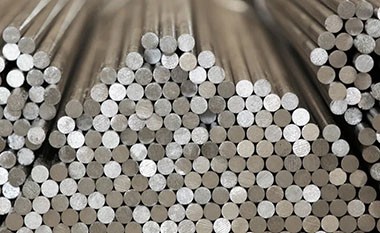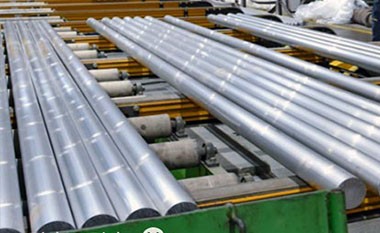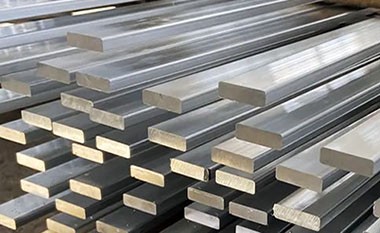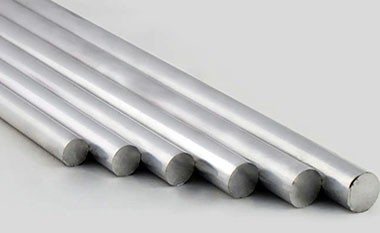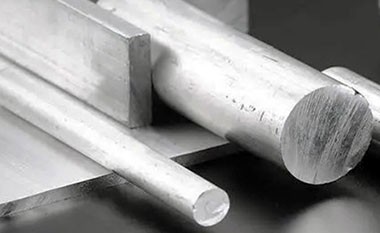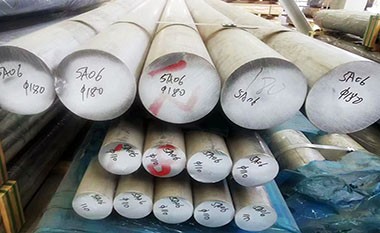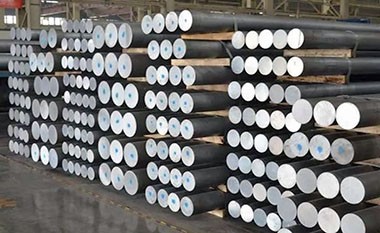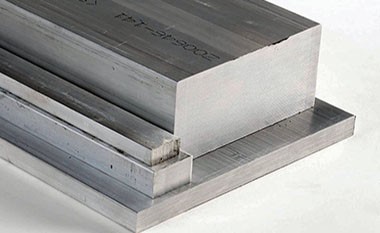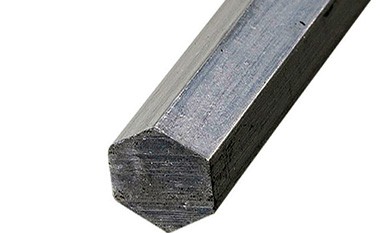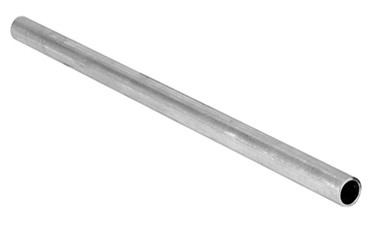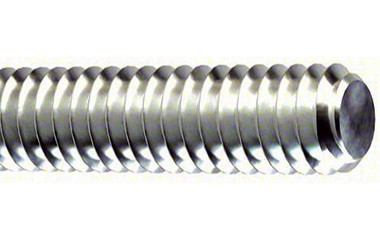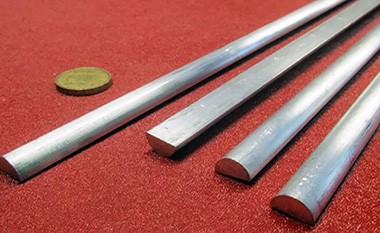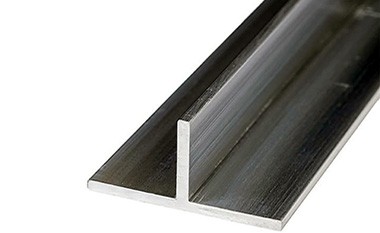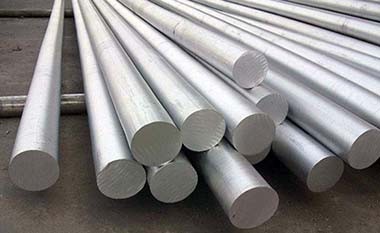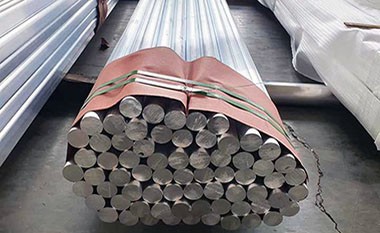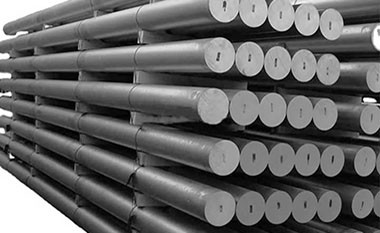2017 Aluminum Bar
2017 aluminum bar is a hard aluminum alloy primarily alloyed with copper, belonging to the 2xxx series of aluminum alloys. Its notable features include high strength and excellent machinability, though its corrosion resistance is relatively poor, often requiring anodizing treatment to improve its corrosion resistance.
2017 Aluminum is a high-strength aluminum alloy primarily composed of aluminum (91.5% to 95.5%) and copper (3.5% to 4.5%). It also contains small amounts of iron, manganese, magnesium, silicon, zinc, titanium, and chromium.
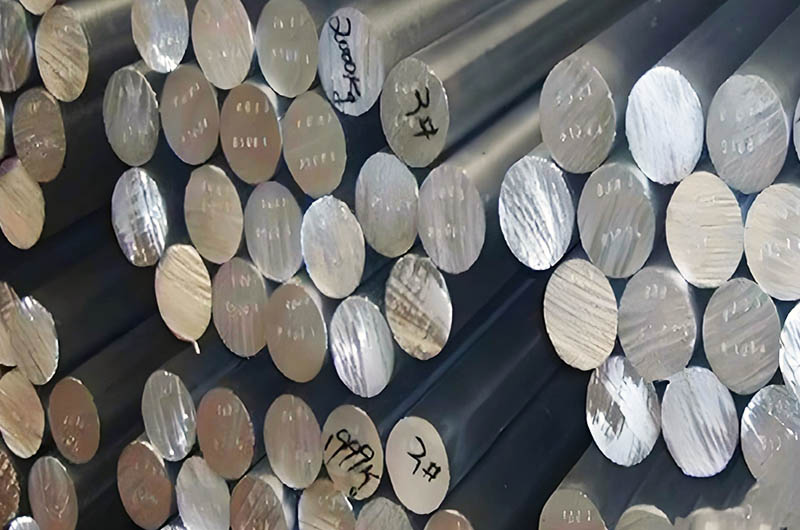
2017 Aluminum Bar Characteristics
- 1. High Strength: 2017 aluminum bar has excellent strength, making it suitable for structural components and equipment parts that need to withstand high loads.
- 2. Good Machinability: This alloy has outstanding machinability, making it ideal for high-precision machining, which is highly valued in industries requiring complex parts manufacturing.
- 3. Poor Corrosion Resistance: The corrosion resistance of 2017 aluminum alloy is relatively low, especially in humid or corrosive environments, so anodizing or other surface treatments are commonly used to enhance its corrosion resistance.
- 4. Heat Treatable: 2017 aluminum alloy can be significantly strengthened through heat treatment (such as T4 and T451 tempers), offering good heat treatability.
HC Aluminum hot selling aluminum 2017 bar products
-
2017 T4/T451 Aluminum Round Bar
This is a round bar made from 2017 aluminum alloy, which is heat-treated to the T4 or T451 temper. T4 indicates solution heat treatment followed by natural aging, while T451 involves artificial aging, enhancing strength and ductility.
-
2017 T4/T451 Aluminum Hex Bar
Similar to the round bar, this hexagonal bar is made from 2017 aluminum alloy in the T4 or T451 temper, providing good machinability and mechanical properties suitable for various applications.
-
2017 T6 Aluminum Bar
This bar is made from 2017 aluminum alloy in the T6 temper, which involves solution heat treatment followed by aging. It offers a higher strength compared to T4 and is commonly used in structural applications.
-
2017 Cold Drawn Aluminum Bar
This bar undergoes a cold drawing process, which reduces its diameter and increases its strength through strain hardening. The cold drawn process typically results in a smoother finish and tighter tolerances.
-
2017 Extruded Aluminum Bar
This bar is produced through the extrusion process, where the 2017aluminum alloy is forced through a die to create a specific shape. It retains good mechanical properties and is often used in construction and manufacturing.
-
2017 Aluminum Square Bar
A square-shaped bar made from 2017 aluminum alloy, offering similar properties to other shapes. It is versatile for machining and fabrication in various applications.
-
2017 Aluminum Flat Bar
This flat bar has a rectangular cross-section and is used in applications requiring flat stock. It is easy to cut, weld, and machine, making it suitable for a wide range of projects.
-
Aluminium 2017 Threaded Bar
This bar features threads along its length, allowing for easy fastening and connection in assemblies. It is often used in mechanical applications where strong, lightweight components are required.
-
Aluminium Alloy 2017 Hot Finish Bar
This bar is produced with a hot finishing process, which can enhance its mechanical properties and surface finish. It's typically used in applications where high strength is required.
-
2017 Aluminium Hot Rolled Round Bar
This round bar is produced through hot rolling, a process that involves deforming the metal at high temperatures. This method improves ductility and can help achieve desired dimensions.
-
Aluminium 2017 Cold Rolled Round Bar
This bar is produced through cold rolling, resulting in tighter tolerances and a better surface finish. Cold rolling increases strength through work hardening and is often used in precision applications.
-
2017 Aluminium Forged Bar
This bar is made by forging, a process that involves shaping the aluminum alloy using compressive forces. Forged bars typically exhibit superior mechanical properties due to the alignment of the grain structure.
HC Aluminum 2017 T4, T451, T6 aluminum bars comply with specifications such as ASTM B221, ASTM B211, ASTM B316, AMS 4118, AMS-QQ-A-225/5, AMS QQ-A-200/9, UNS A92017, EN573, EN485, and JIS H4040.
HC Aluminum 2017 bar inventory list
| Product | Temper | Type |
| 1/4" 2017 T451 Round Bar | T451 | Round Bar |
| 3/8" 2017 T451 Round Bar | T451 | Round Bar |
| 1/2" 2017 T451 Round Bar | T451 | Round Bar |
| 1" 2017 T451 Round Bar | T451 | Round Bar |
| 2" 2017 T451 Round Bar | T451 | Round Bar |
| 2-1/2" 2017 T451 Round Bar | T451 | Round Bar |
| 2-5/8" 2017 T451 Round Bar | T451 | Round Bar |
| .430" 2017 T451 Hex Bar | T451 | Hex Bar |
| .741" 2017 T451 Hex Bar | T451 | Hex Bar |
| .930" 2017 T451 Hex Bar | T451 | Hex Bar |
| 1/2" 2017 T4 Round Bar | T4 | Round Bar |
| 3/4" 2017 T4 Round Bar | T4 | Round Bar |
| 1/4" 2017 T4 Round Bar | T4 | Round Bar |
| 5/8" 2017 T4 Round Bar | T4 | Round Bar |
| 3/16" 2017 T4 Round Bar | T4 | Round Bar |
| 5/16" 2017 T4 Round Bar | T4 | Round Bar |
| 1/8" 2017 T4 Round Bar | T4 | Round Bar |
| 1" 2017 T4 Round Bar | T4 | Round Bar |
| 2" 2017 T4 Round Bar | T4 | Round Bar |
| 3" 2017 T4 Round Bar | T4 | Round Bar |
| 1-1/2" 2017 T4 Round Bar | T4 | Round Bar |
| 1-1/4" 2017 T4 Round Bar | T4 | Round Bar |
| 1-1/8" 2017 T4 Round Bar | T4 | Round Bar |
| 3/8" 2017 T4 Round Bar | T4 | Round Bar |
2017 Aluminum Bar Chemical Composition
| Cu | Si | Fe | Mn | Mg | Zn | Cr | Ti | Pb.Bi | Al |
| 3.5-4.5 | 0.2-0.8 | 0.70 | 0.4-1.0 | 0.4-0.8 | 0.25 | 0.10 | 0.15 | / | Remainder |
2017 Aluminum Bar Typical Mechanical and Physical Properties
| Aluminum Alloy Grade and Temper | Weldability | Machinability | Corrosion Resistance | Electrical Conductivity at 20°C (68℉) (%IACS) | Density at 20°C (g/cm3) |
| 2017-T451 | Fair | Excellent | Poor | 30-40 | 2.79 |
| Aluminum Alloy Grade and Temper | Tensile Strength (25°C MPa) | Yield Strength (25°C MPa) | Hardness 500kgf 10mm Ball | Elongation at 1.6mm (1/16in) Thickness | Maximum Shear Stress (MPa) |
| 2017-T451 | 425 | 275 | 105 | 20 | 260 |
Equivalent name of 2017 aluminum bar
| European Standard | OLD | WNr | UNS | ISO | USA (AA) | GERMANY (DIN) |
| AW-AlCu4MgSi | AU4G | 3.1325 | A92017 | AlCu4MgSi | 2017 | AlCuMg1 |
2017 Aluminum Bar Applications
1. 2017 Aerospace Aluminum Bar
2017 aluminum bar has good strength and fatigue resistance, making it ideal for manufacturing critical aircraft structural components. Due to the aerospace industry's demand for high strength and lightweight materials, 2017 aluminum bars are widely used in aircraft structural parts, propeller components, and high-stress fasteners and frameworks. It meets the high strength requirements and offers excellent machinability, which is why it is also commonly used for fuselage skins and internal support components.
2. Transportation Vehicles
2017 aluminum bar is used in the manufacturing of load-bearing and structural components such as frames and chassis in automobiles and trains. The combination of its lightweight and high strength significantly reduces vehicle weight, improving fuel efficiency, and it is widely applied in high-speed trains and long-distance transportation vehicles. Its excellent machinability and corrosion resistance ensure long-term durability in harsh environments.
3. 2017 Aluminum Bar for Building Structures
In the construction industry, 2017 aluminum bars are used to produce high-strength structural components such as supports, beams, and columns. Thanks to its superior mechanical properties, it can withstand heavy loads and has good corrosion resistance, making it suitable for indoor and outdoor high-strength support structures, especially in architectural designs that require both lightweight and durability.
4. Propeller Components and Accessories
The excellent machinability of 2017 aluminum bars makes them an ideal material for manufacturing propeller components and accessories. Its hardness and fatigue resistance ensure high-precision machining, allowing stability under high-speed rotation and extreme conditions. Additionally, 2017 aluminum's good thermal conductivity helps improve mechanical efficiency and durability.
2017 Aluminum Bar Advantages
| Advantage | Detailed Description |
| High Strength-to-Weight Ratio | 2017 aluminum bar, with its outstanding strength and relatively light weight, becomes an ideal choice for many high-performance applications. Its high strength allows it to withstand larger loads and pressures, making it suitable for structural components that require strength or parts that endure extreme working conditions. Meanwhile, its low density ensures that it does not add unnecessary weight, which is why it is widely used in aerospace, transportation, and high-strength industrial components, especially in applications where weight is a critical factor. |
| Good Workability | 2017 aluminum bar demonstrates excellent machinability, making it highly favored in precision manufacturing processes. It can achieve high-precision dimensions and surface quality through common machining methods, such as cutting, turning, milling, and drilling. This workability facilitates the production of complex shapes and precise parts, making it particularly suitable for components in the aerospace industry that require high precision, such as propellers and aircraft fuselage frames. |
2017 Aluminum Bar Disadvantages
Reduced Corrosion Resistance: Compared to pure aluminum, it is more prone to corrosion and requires protective coatings.
Poor Weldability: Due to the high melting point of the oxide film that forms, it is difficult to weld.
2017 Aluminum Bar vs. Similar Alloys
Compared to 2024: 2017 is an older alloy with slightly different alloying proportions. 2024 is more commonly used today but shares similar aerospace applications.
| Comparison Factor | 2017 Aluminum Bar | 2024 Aluminum Bar |
| Alloy Composition | The alloy composition of 2017 aluminum bar differs slightly from that of 2024. 2017 aluminum bar primarily contains copper, manganese, and silicon, focusing on strength and machinability. It offers good corrosion resistance and heat performance, but its fatigue resistance is somewhat lower than that of 2024. | The alloy composition of 2024 aluminum bar primarily contains higher copper content, offering higher tensile strength and better fatigue resistance. Its corrosion resistance and heat performance are slightly lower than those of 2017, so it may require coatings for protection under certain conditions. |
| Strength-to-Weight Ratio | 2017 aluminum bar has a high strength-to-weight ratio, providing adequate strength without significantly increasing weight. This makes it suitable for high-strength, low-weight aerospace applications. | 2024 aluminum bar has a slightly higher strength, especially when subjected to cyclic loads or fatigue loading. Its higher strength and fatigue resistance make it more commonly used in aerospace applications. |
| Application Areas | 2017 aluminum bar is often used in aerospace applications, especially where high strength and stringent weight requirements are needed. It is used in some high-performance structural components, such as aircraft fuselage frames and structural parts. | 2024 aluminum bar is widely used in aerospace applications, particularly for high-load structural components. It is commonly used in primary load-bearing structures of aircraft, such as wings, fuselage beams, and landing gear. 2024 aluminum bar is one of the most commonly used aluminum alloys in the aerospace industry. |
| Market Usage | 2017 aluminum bar, as an older alloy, is still used in some specific applications, but its market usage is relatively limited compared to 2024 aluminum bar. | 2024 aluminum bar is currently one of the most widely used aluminum alloys in the aerospace industry, extensively used in many primary load-bearing components of aircraft and continues to be used in high-strength industrial applications. |
Through this comparison, we can see that although 2017 aluminum bar and 2024 aluminum bar share many similarities in terms of strength, weight ratio, and applications, 2024 aluminum bar has become a more common choice in modern aerospace due to its higher strength, fatigue resistance, and broader market applications.
Manufacturing Considerations
- Welding: Due to its copper content, welding can be challenging. It is typically joined using rivets or fasteners.
- Heat Treatment: It can be heat-treated to optimize performance through processes such as solution treatment and aging.
2017 aluminum bar is a high-strength, machinable alloy, ideal for applications that prioritize strength over corrosion resistance. It is typically used in aerospace and structural applications, where protective coatings are necessary in corrosive environments, and it is supplied in standard conditions to meet industry requirements.
2017 aluminum is a versatile alloy with high strength and machinability, suitable for demanding applications across various industries.

